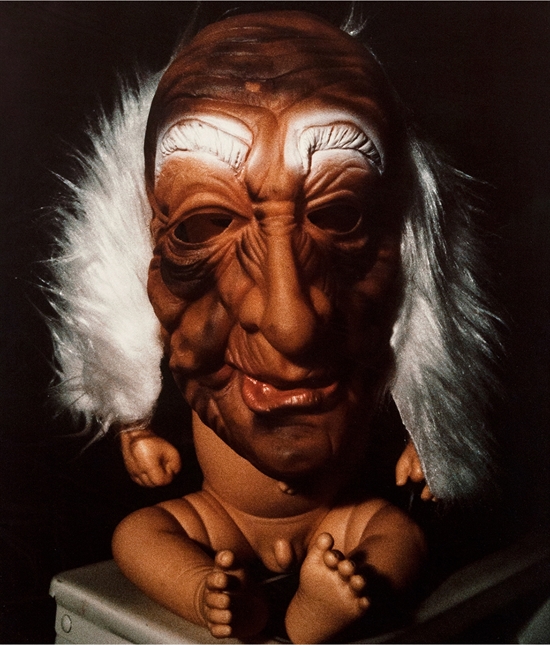Cindy Sherman
Auction Ended
Cindy Sherman
Mask over Babydoll. 1987-1992
color photograph (c-print)
24 x 20 in. (60.9 x 50.8 cm.) (sheet)
36 x 31 x 1 in. (91.4 x 78.7 x 2.5 cm.) (framed)
Printed 1992 this work is from an edition of 125
Provenance:
The Collection of Betsy and Ed Zimmerman
Estimate: $4,000-6,000
Item condition: New
For four decades, Cindy Sherman has probed the construction of identity, playing with the visual and cultural codes of art, celebrity, gender, and photography. She is among the most significant artists of the Pictures Generation—a group that also includes Richard Prince, Louise Lawler, Sherrie Levine, and Robert Longo—who came of age in the 1970s and responded to the mass media landscape surrounding them with both humor and criticism, appropriating images from advertising, film, television, and magazines for their art.
Sherman was always interested in experimenting with different identities. As she has explained, “I wish I could treat every day as Halloween, and get dressed up and go out into the world as some eccentric character.”Shortly after moving to New York, she produced her Untitled Film Stills (1977–80), in which she put on guises and photographed herself in various settings with deliberately selected props to create scenes that resemble those from mid-20th-century B movies. Started when she was only 23, these images rely on female characters (and caricatures) such as the jaded seductress, the unhappy housewife, the jilted lover, and the vulnerable naif. Sherman used cinematic conventions to structure these photographs: they recall the film stills used to promote movies, from which the series takes its title. The 70 Film Stills immediately became flashpoints for conversations about feminism, postmodernism, and representation, and they remain her best-known works.
Sherman has continued to transform herself, displaying the diversity of human types and stereotypes in her images. She often works in series, improvising on themes such as centerfolds (1981) and society portraits(2008). Untitled #216, from her history portraits (1981), exemplifies her use of theatrical effects to embody different roles and her lack of attempt to hide her efforts: often her wigs are slipping off, her prosthetics are peeling away, and her makeup is poorly blended. She highlights the artificiality of these fabrications, a metaphor for the artificiality of all identity construction.
While she sometimes portrays glamorous characters, Sherman has always been more interested in the grotesque. In the 1980s and 1990s, series such as the disasters (1986–89) and the sex pictures (1992) confronted viewers with the strange and ugly aspects of humanity in explicit, visceral images. “I’m disgusted with how people get themselves to look beautiful; I’m much more fascinated with the other side,”she said in 1986. At the time, images of ailing bodies were painfully on view in the news during the AIDS crisis; these added poignancy to her investigation of the grotesque and of various types of violence that could be done to the body. In these series and throughout all of her work, Sherman subverts the visual shorthand we use to classify the world around us, drawing attention to the artificiality and ambiguity of these stereotypes and undermining their reliability for understanding a much more complicated reality. (Taken MoMA.org)
Auction History
Auction has finished
Auction failed because there were no bids| November 8, 2023 7:57 am | Auction started | ||
